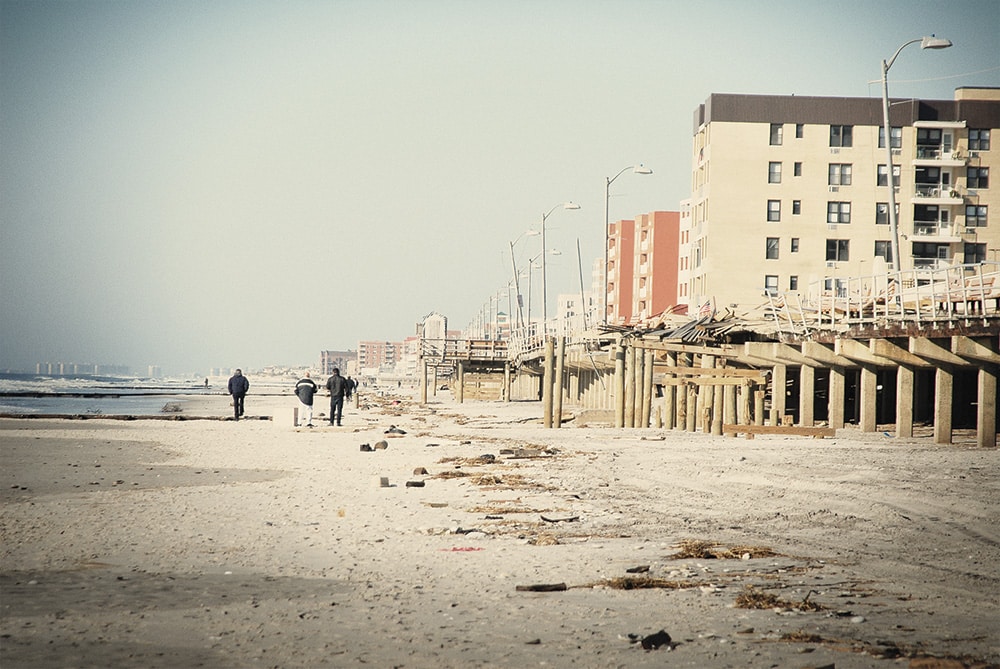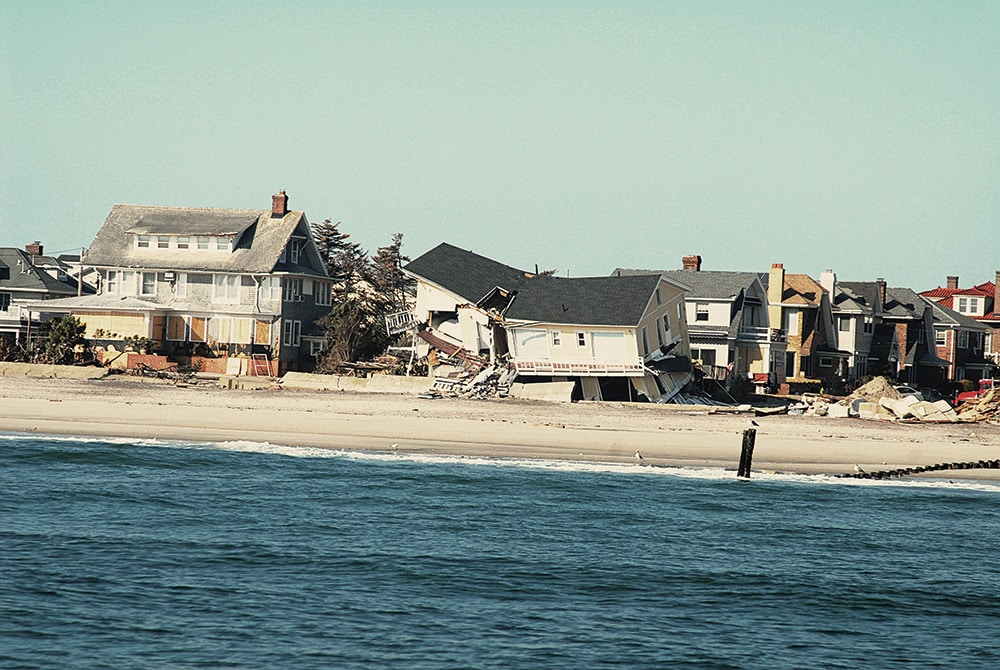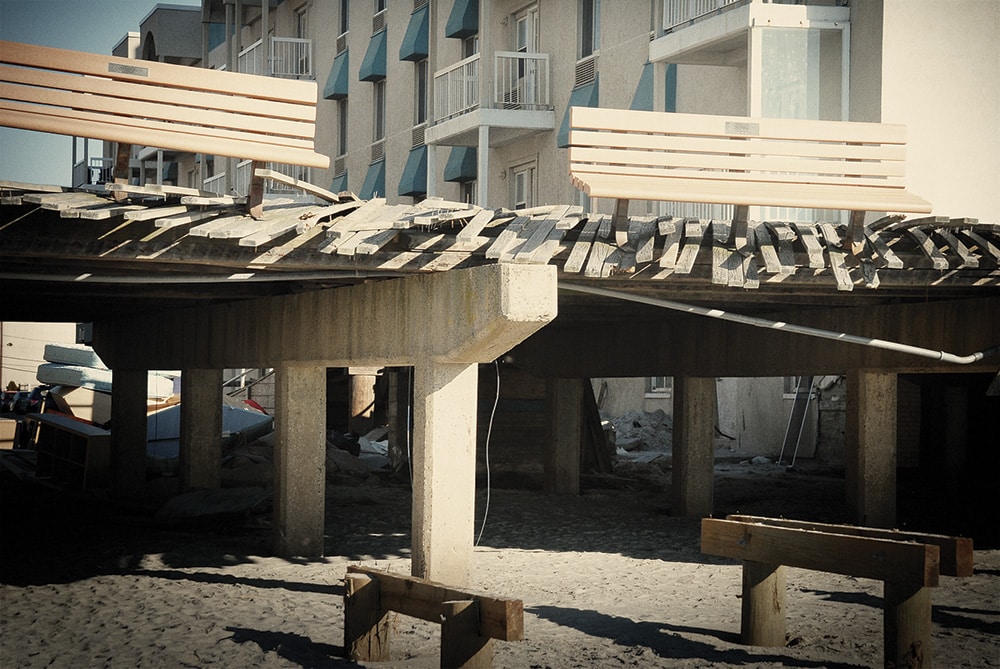
As I write this, we along the Northeast coast are a month out from the catastrophic 11-foot storm surge pushed through by Hurricane Sandy. We are still cleaning up, and it’s likely that some things will never be the same. The guiding business in this area was always a precarious one, but with most of the infrastructure gone, it’s hard to be optimistic about its sustainability. The water from Montauk, New York, down to Barnegat, New Jersey, seems to be completely devoid of life and smells of raw sewage and diesel fuel. Certainly some of these impacts are temporary, yet there are larger, glaring issues here that communities like mine that are on or near the water have thus far failed to acknowledge or chosen not to.
While it’s convenient to think that Sandy was an anomaly — the unlikely merger of an unusually high full-moon tide, a hurricane and a nor’easter — it’s hard to argue that the incidents of such extreme weather don’t appear to be more frequent. According to the New York Times, 20 of the 30 most expensive insured catastrophes worldwide from 1970 to 2011 have occurred since 2001, 13 of which were in the United States. Aside from Sept. 11, 2001, all of these were natural disasters. Such an increase is of course related to the migration of people to high-risk areas and more valuable properties. Still, it’s becoming obvious that we are living through a period of flux. Whether you believe we are causing it or that there is anything we can do about it, the climate is changing and sea levels are rising.
The New York Times recently reported on a study that suggests that, no matter what, it’s unlikely we’ll keep the seas from climbing less than five feet by the first half of next century. Well before that we will likely see more and more storm surges as gradually rising seas lower flooding thresholds. According to the Times, over the last century, the eight-inch rise of the world’s seas has already doubled the chance of “once in a century” floods. Such conjecture is based on model projections, which are notoriously hard to get right. But there are other studies utilizing historical analysis that point to the same end.
Denial aside, it’s clear we have a very big problem, but it’s the solutions that sometimes scare me more than the flooding itself.
The continued construction of seawalls, jetties, offshore breakwaters, groins and, as some proponents suggest, levees is not the solution. It is now well understood that armoring beaches destroys them. Hard structures do not allow marshes and beaches to move inland in response to sea-level rise and eventually result in the loss of shoreline environments. Recent experience in New Jersey and elsewhere has made it very clear that seawalls aren’t successful in holding back major storm surges. Yet, they are very successful in eliminating habitat for marine organisms and providing beautiful beachfront for the public. Yes, these beaches can be artificially replaced, but at great cost to the marine environment, not to mention taxpayers, some of whom successfully argue they shouldn’t have to pay for the beach when they weren’t the ones irresponsible enough to build next to an eroding shoreline. Yet such knowledge is generally ignored by coastal developers and engineers and is still widely unrecognized by the general public.
A reasonable and beneficial approach, on a number of levels, would be to buffer the coast with “living shorelines,” which include natural habitat elements such as indigenous vegetation to stabilize and protect eroding shorelines. On its website, the National Oceanic and Atmospheric Administration defines the term living shoreline as a natural bank stabilization that uses plants, sand and a limited amount of rock to provide shoreline protection and maintain valuable habitat. It describes living shoreline projects as those that use a variety of structural and organic materials, such as wetland plants, submerged aquatic vegetation, oyster reefs, coir fiber logs, sand fill and stone. Living shorelines do not sever existing connections between riparian, intertidal, estuarine and aquatic areas essential for water quality, ecosystem services and habitat values.
Large areas like Jamaica Bay and Lower New York Bay have lost a lot of their wetlands, oyster reefs and other natural systems to development and other processes. These natural buffers can and should be brought back as living shorelines. Such marsh habitat can slow and reduce a storm surge while having a wealth of other benefits, including the habitat and biodiversity necessary for productive fisheries. Such a system of soft edges would cost hundreds of millions instead of the billions for storm surge barriers.
Even if we were to reconstruct living shorelines all across the region, with the incidence of such storms and the undeniable reality of sea-level rise, this is still a battle we simply cannot win in the long term. The water will come, and barrier islands on the coastal New York and New Jersey coasts will be at risk.
Hurricane Sandy pushed the footprints of these islands landward as the storm carried tons of beach sand out to deep waters or swept it across the islands. Such barrier-island migration toward the mainland has gone on for thousands of years and will likely only accelerate. Yet, there is already a push taking place to rebuild right up to the beach and to bring back the shorelines to where they were. There will be billions of federal dollars available to repair and replace infrastructure.
As a homeowner in a flood zone, it’s empowering to think that we can come back stronger and better, but the painful reality is that we can’t win here. Communities could discourage the reconstruction of destroyed or badly damaged homes, but they haven’t and won’t, because it would be frowned upon. Valuable property would have to be abandoned and a program where owners would be compensated by taxpayers would have to be implemented. In the long run this would save taxpayer dollars, ending the cycle of disaster relief and federal flood insurance losses, and would save such homeowners a lot of heartache. Surviving and new buildings could be elevated on pilings, and some could conceivably be moved back from the beach.
The Northeast will likely experience more storms like Sandy, and as sea levels continue to rise, the surges will be even more destructive. It’s hard not to endorse building large walls, because they seem to make sense, but they don’t. Instead of just pouring concrete on the problem, we could simultaneously work to improve our flood resilience and coastal ecosystems. But we also need to seriously consider where we build/rebuild. Retreating from the ocean’s edge may be the only real solution.
**C’est Levee? **
A barrier proposal in New York, which is being taken seriously, includes massive levees over the Rockaway Peninsula and other low-lying nearby land. It’s hard to imagine that the city would seriously consider a levee system similar to the one in New Orleans. Every barrier plan that has been presented would reduce exchanges of New York’s estuarine waters with the ocean, which would undoubtedly degrade water quality and change temperature and salinity. This would have complex and likely devastating effects on local ecosystems and, of course, coastal fisheries.













